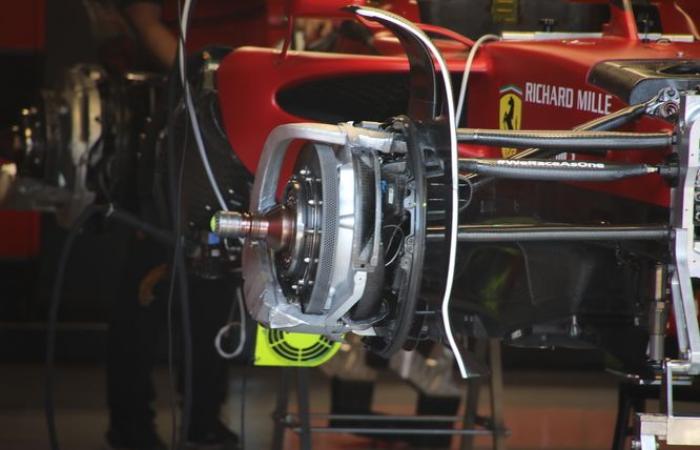By Carlo Platella
The next Formula 1 regulatory cycle expected for 2026 is taking shape. Among the many new features on the new single-seaters will change the braking system, especially the rear one, as a consequence of the reduction in minimum weight and the increase in the electrical power of the power unit. No revolution however on the suspension front, which will keep the same components currently in use.
How brakes change
One of the significant changes on the next generation Formula 1 cars will be the reduction of the minimum weight. At the moment a weight of 724 kg has been agreed upon, but the tires are excluded, the specifications of which have not yet been defined. However, considering how the tires will remain similar in size to the current ones, a reduction in the overall weight of the car of 30 kg is estimated, easing the work for the braking system. In addition to becoming lighter, the next cars will also have less aerodynamic load and therefore less grip, reducing the performance required from the brakes. Finally, in 2026 the power of the rear electric motor will increase from 120 to 350 kW, thus also tripling the braking contribution during braking phases. This will lighten the workload for the rear hydraulic system, which can be further downsized.
However, brake discs will not simply get smaller. In fact, the matter is more complex, as the minimum diameter for the internal ventilation holes drops from 3 to 2.5 millimetres, allowing an increase in the number of internal channels, but removing material and thus requiring larger components for the same mass. For this reason it was decided to widen the minimum thickness of the discs from 32 to 34 mm. The minimum diameter for the front elements remains 325 mm, while the maximum diameter goes from 330 to 345 mm. At the rear instead we are facing a reductionwith the minimum diameter decreasing from 275 to 260 mm, maintaining the maximum diameter at 280 mm.
Suspensions unchanged
If the braking system undergoes major changes, the same cannot be said for the suspension unit. In fact, components such as mass dampers, inerters and valves sensitive to acceleration, tools useful for dampening the oscillations of the car body, in particular the vertical ones, remain prohibited. The elements mentioned had been banned with the 2022 regulations for a simplification of suspensions, and then evaluate their return in view of 2026 given their usefulness in dampening porpoising bounces triggered by ground effect. However, this scenario did not materialize.






